Hiking, Cycling, History & Culture in Northern Laos
The northern reaches of Laos are home to authentic hill tribes, scenic rice paddies, towering limestone karsts, and loads of trekking and cycling opportunities. Leave the south behind and see what the Golden Triangle has to offer.
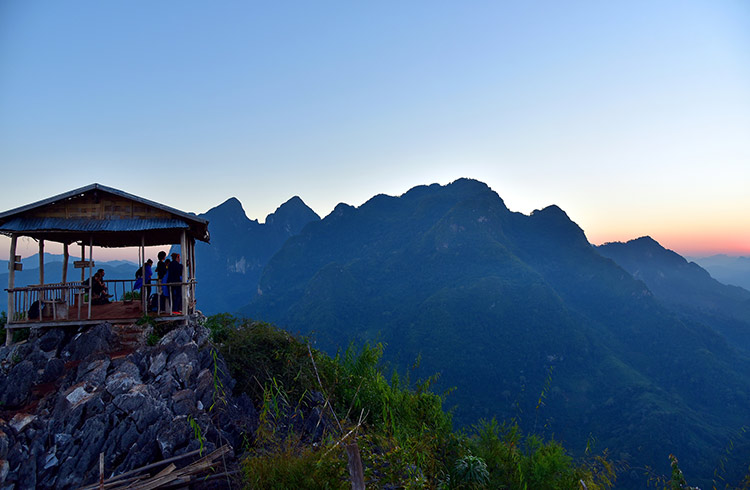 Photo © Getty Images/Vincent Jary
Photo © Getty Images/Vincent Jary
While Laos is firmly on the Banana Pancake Trail, you can still travel independently and get off the beaten path. Rent a motorbike or a bicycle and explore. Talk to locals. Eat at places that aren’t #1 on TripAdvisor. Regardless of how busy the north of Laos is becoming, there are still places waiting to be discovered.
- Nong Khiaw and Muang Ngoi
- Caving and hiking around Nong Khiaw
- Vang Vieng
- Plain of Jars
- Ziplining in Nam Kan National Park
- Luang Namtha and Nam Ha National Park
Nong Khiaw and Muang Ngoi
Northern Laos is the spot for caving, mountain biking, kayaking, hiking, and visiting waterfalls. Don’t miss the village of Nong Khiaw, which is a three-hour bus ride from Luang Prabang and Muang Ngoi, or an hour
The Nam Ou River snakes along the valley floor passing the towering limestone karsts surrounding these villages. Both villages are super chilled-out places where swinging in a hammock with a book in hand is the norm. The scenery from your guesthouse balcony will be stunning, but to truly experience Nong Khiaw and Muang Ngoi, it’s best to leave the villages behind and head into the countryside.
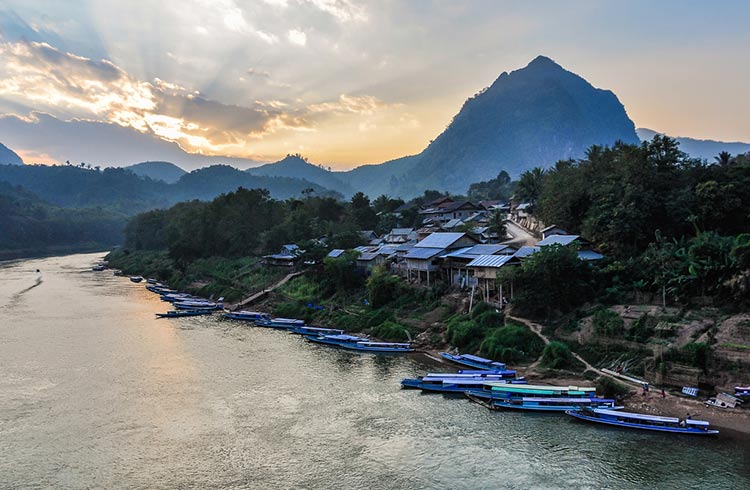
If you’re interested in hiking and waterfalls, hike to the 100 waterfalls. First, take a boat to Nam Ou Village, then walk through
Caving and hiking around Nong Khiaw
Check out the Tam Phatok Cave (which is a one-hour walk south of town, or rent a bicycle to get there in 20 minutes). During the Vietnam war, local people sheltered here during bombings. Explore the wide-open chamber in the cave, which gets a lot of natural light, so you don’t really need a flashlight or a guide.
Take a three-hour return hike up to the Nong Khiaw viewpoint for spectacular views across the valley and the town below. To find the trailhead, go past the bridge on the guesthouse side of the river and you’ll see signs with arrows pointing you in the right direction. For 20,000 kip you’ll receive a bottle of water and a walking stick, and you’re on your way.
For a more remote experience, make your way upriver to Muang Ngoi, which attracts more of a backpacker crowd than Nong Khiaw who cater to all budgets. Muang Ngoi only started receiving 24-hour electricity in 2013, and still retains its authenticity.
Take a multi-day trek to nearby Tai, Hmong
For epic views over the village, hike the steep, 30-minute trail to Pha Noi viewpoint. Entrance to the trail is at the north end of Muang Ngoi, behind the temple. The fee for this hike is 10,000 kip.
Vang Vieng
Vang Vieng used to be known for its drug scene, tubing down the river while heavily intoxicated, and endless parties. However, these days the town is more relaxed, with its quiet surrounding farmland, red tiled rooves and towering karsts, similar to those found in southern Thailand.
Renting a bike is one of the best ways to see Vang Vieng, with many guest houses offering mountain bikes for 20,000 kip and regular bicycles for 10,000
We rented mountain bikes from our guesthouse owner who gave us directions to various sites. We set off to explore without a
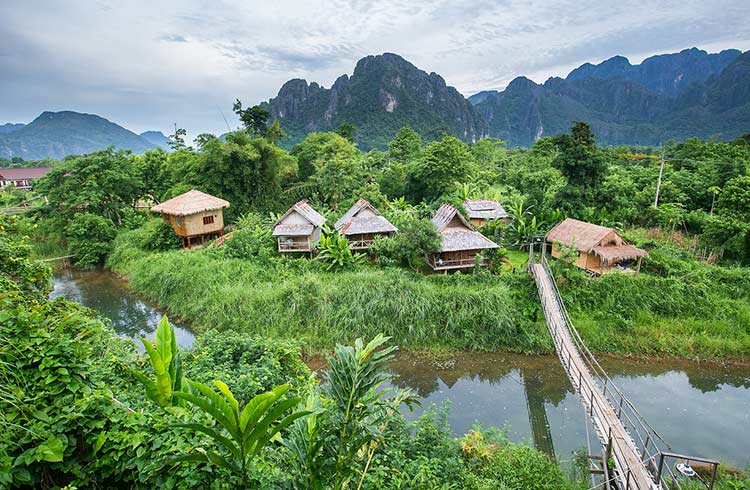
There are numerous caves in the surrounding karsts, including Lusi Cave, which is across the bamboo bridge, about a 25-minute walk, or about a 10-minute bike ride.
It’s easy to find a local guide at the cave, and we found a local boy standing at the front of the cave who offered to be our guide. Don’t forget to bring a headlamp, as the ones on offer are very dim and unreliable. It was damp, dark and slippery on the rocks inside Lusi Cave. You’ll wander through the cave with only your headlamp to guide
For a more enjoyable swim, a 45-minute cycle out of town, the Blue Lagoon is a great spot to cool off. You really can’t get lost on your way here as there are numerous signs. It’s 10,000
Plain of Jars
At Phonsavan, 248mi (400km) north of Vientiane lies one of Asia’s greatest mysteries, The Plain of Jars. Huge stone urns, or jars, litter the countryside, some as tall as 10ft (3m) and weighing several tons. This site is similar to the likes of Stonehenge in England or Easter Island in Chile, in that historians are still baffled as to why these stone jars were carved 2,500 years ago.
One local myth suggests the jars were used to keep human remains, while another says that the stone jars were used to ferment wine. Or, maybe more simply they were just there to collect rainwater for drinking.

From Phonsavan you can organize a local tour, or hire your own motorbike. Tuk Tuks are not allowed to take travelers to the Plain of Jars, and there are no buses available. Once you reach the plains, be aware that only a few of the sites are open for visitors. During the Vietnam War, the Americans dropped 270 million bombs on Laos and today, there are still unexploded bombs that could detonate, so stay on the marked paths.
Ziplining in Nam Kan National Park
Since the zipline opened in 2004, The Gibbon Experience project has worked with rural communities that live in the hills of Nam Kan National Park, which was recently designated as a protected park. The project helps fund forest patrols, irrigation schemes
Over the years, there have been multiple incidents involving travelers, from minor and major injuries to death. Before you book the expensive activity, check to make sure your travel insurance will cover the activities you’ll be doing, and read the reviews online to be sure your adventure thirst is up for the challenge. When you get there, pay attention to the safety video, inspect your zipline gear and always listen to the guide’s instructions.
There are a variety of packages here. Classic is a three-day, two-night trip on a relaxed schedule with the maximum chance of Gibbon sightings. Honeymon is a private three-days, two-night adventure. Express is a two-day, one-night trip with zip lining and less chance of Gibbon sightings.
You’ll spend nights sleeping in the world’s highest tree houses, which are made from wood and built entirely into the trees. These open-air homes, 100ft (30-40m) above the ground, are incredibly impressive, and surprisingly comfortable, with mattresses on the floor and mosquito nets to keep the bugs out.
Guests are free to zip around the jungle solo – pay extra attention to the safety video – and you’ll feel like Tarzan flying through more than 9-miles of zipline around the treetops alongside birds, and, hopefully, Gibbons.
Meals are prepared and delivered hot by zip line to your treehouse three times a day.
Luang Namtha and Nam Ha National Park
Located just next to the new Nam Kan National Park (where you’ll find The Gibbon Experience), this stunning bit of rainforest makes for a great place to hike and visit Hill Tribes (expect to encounter people from the Mien, Karen, Hmong and Akha Tribes). Luang Namtha is the jumping-off point to the nearby National Park, and while the town itself isn’t overly exciting, it still makes for a good base.
The most common trip from Luang Namtha is a three-night, two-day journey to nearby villages, which includes jungle trekking, guide fees, accommodation, and food. However, if you’re feeling especially adventurous and are physically fit, there are longer trips you can take, up to eight days.
The main thing that travelers complain about is the awful accommodation, and this is truly a “you get what you pay for” situation. When researching various different tour operators, ask to see photos of where you’ll be sleeping and provide details about what you’ll be eating. Some places offer comfortable mattresses with mosquito nets, while others are just sheets on the ground with banana leaves for padding.
Two good eco-conscious, community-based tours companies are The Hiker and Green Discovery.
After your long trekking trip, reward yourself with a visit to the herbal sauna in Luang Namtha, and enjoy a pizza from Bamboo Lounge – a restaurant that gives back to the community by training and employing ethnic minority locals. It also provides free drinking water, which really helps to cut back on single-use plastics. Carry a reusable water bottle to avoid buying bottled water.
Other options nearby include mountain biking to the surrounding village of Ban Nam Dee, and continuing on to Nam Dee waterfall, (great if it’s rained recently, but quite dry otherwise). Entrance to the falls is 10,000 kip.
Related articles
Simple and flexible travel insurance
You can buy at home or while traveling, and claim online from anywhere in the world. With 150+ adventure activities covered and 24/7 emergency assistance.
Get a quote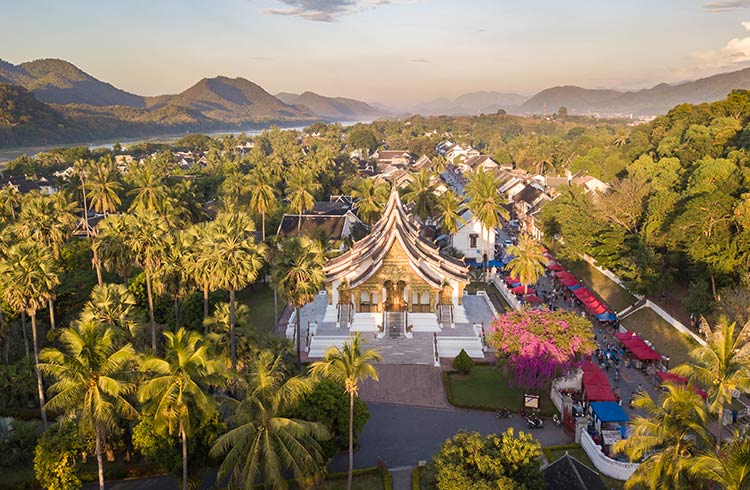
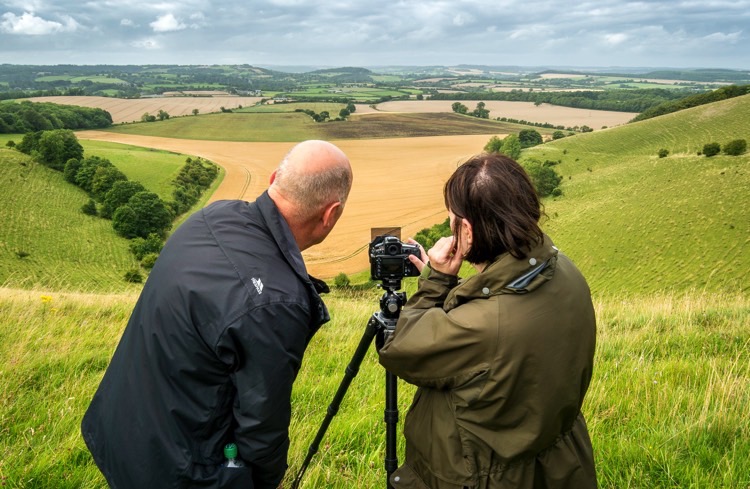

No Comments